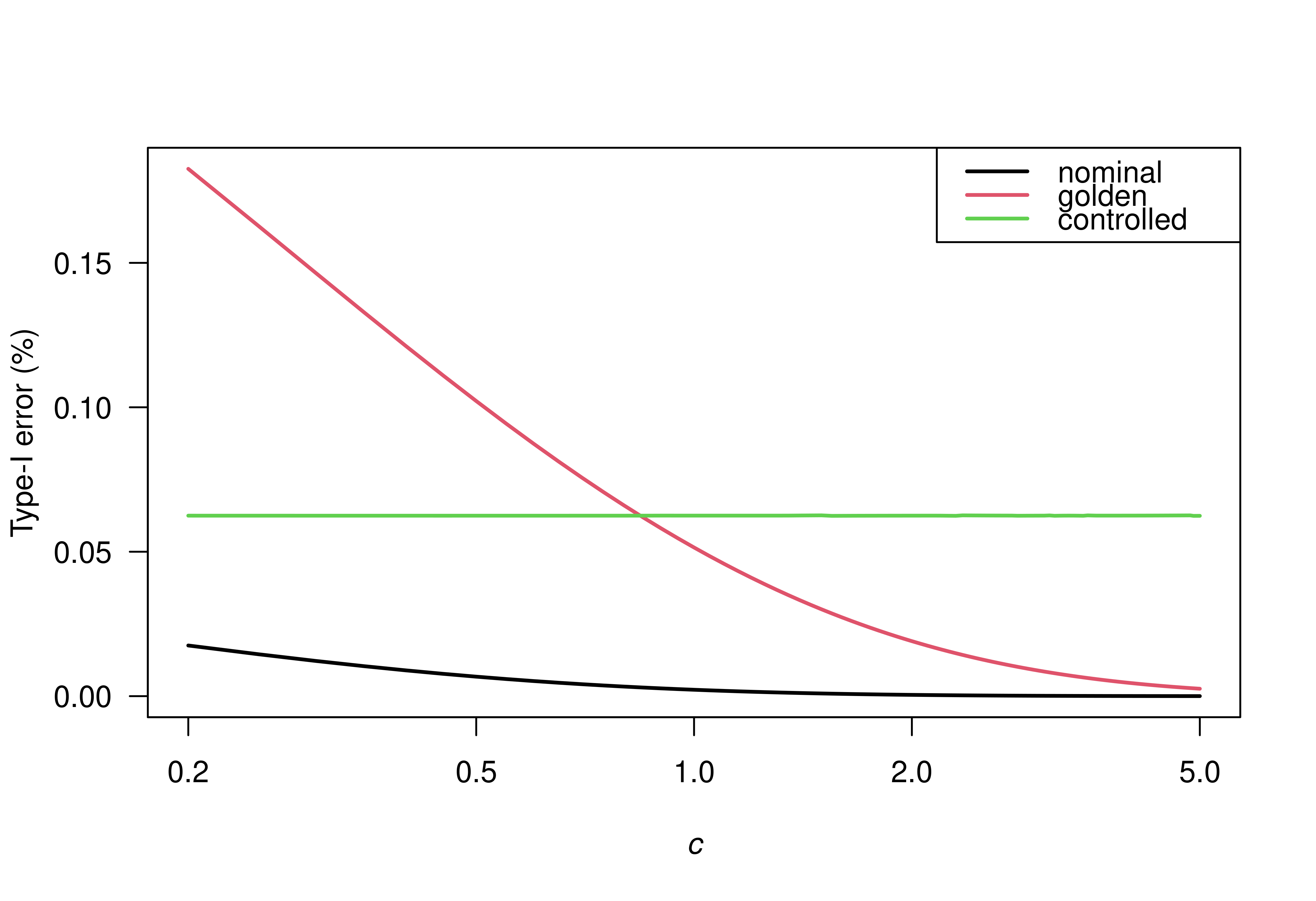Compute overall type-I error rate of the sceptical p-value
Source:R/T1EpSceptical.R
T1EpSceptical.RdThe overall type-I error rate of the sceptical p-value is computed for a specified level, the relative variance, and the alternative hypothesis.
Arguments
- level
Threshold for the calibrated sceptical p-value. Default is 0.025.
- c
Numeric vector of variance ratios of the original and replication effect estimates. This is usually the ratio of the sample size of the replication study to the sample size of the original study.
- alternative
Specifies if
levelis "two.sided" or "one.sided".- type
Type of recalibration. Recalibration type can be either "golden" (default), "nominal" (no recalibration), or "controlled".
Value
The overall type-I error rate.
Details
T1EpSceptical is the vectorized version of
the internal function .T1EpSceptical_.
Vectorize is used to vectorize the function.
References
Held, L. (2020). The harmonic mean chi-squared test to substantiate scientific findings. Journal of the Royal Statistical Society: Series C (Applied Statistics), 69, 697-708. doi:10.1111/rssc.12410
Held, L., Micheloud, C., Pawel, S. (2022). The assessment of replication success based on relative effect size. The Annals of Applied Statistics. 16:706-720. doi:10.1214/21-AOAS1502
Micheloud, C., Balabdaoui, F., Held, L. (2023). Assessing replicability with the sceptical p-value: Type-I error control and sample size planning. Statistica Neerlandica. doi:10.1111/stan.12312
See also
Examples
## compare type-I error rate for different recalibration types
types <- c("nominal", "golden", "controlled")
c <- seq(0.2, 5, by = 0.05)
t1 <- sapply(X = types, FUN = function(t) {
T1EpSceptical(type = t, c = c, alternative = "one.sided", level = 0.025)
})
matplot(
x = c, y = t1*100, type = "l", lty = 1, lwd = 2, las = 1, log = "x",
xlab = bquote(italic(c)), ylab = "Type-I error (%)",
xlim = c(0.2, 5)
)
legend("topright", legend = types, lty = 1, lwd = 2, col = seq_along(types))
